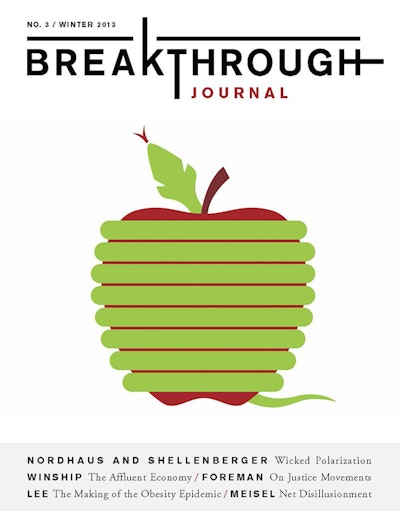The Ponzi Scheme of Perpetual Growth
-
-
Share
-
Share via Twitter -
Share via Facebook -
Share via Email
-
In his hubristic essay, "The Planet of No Return," Erle Ellis argues, "The perennial concern that human civilization has exceeded the carrying capacity of Earth's natural systems and may thus be fundamentally unsustainable" is a notion that "rests upon a series of assumptions that are inconsistent with contemporary science." Yet Ellis fails to identify this series of assumptions or present well-articulated arguments against the validity of what they might claim. Indeed, Ellis takes issue with only one widely shared assumption: he apparently disagrees that there are any "natural" or "biophysical" limits that could ultimately constrain "the human enterprise." Ellis's overall argument, crudely put, seems to be that we've so far gotten away with our increasingly frenetic human activities and the toll they are taking on the biological systems of the planet, so we will surely continue to do so in the future.
Ellis seems to be drawing upon the so-called environmentalist's paradox as articulated by Ciara Raudsepp-Hearne: "How is it that human well-being continues to improve as ecosystem services decline?"1 Yes, we have dramatically increased agricultural productivity, particularly over the last century, thanks to fossil-fuel-derived energy.2 But as Raudsepp-Hearne acknowledges, there are limits to the continued human takeover of the biosphere. "As we approach the limits to resource use and alterations in biogeochemical cycles," she writes, "humanity risks the predictable outcome of running out of resources, or the less predictable outcome of sudden declines in the production of threshold-related ecosystem services." The unavoidable question is: how long can this go on? One can imagine a sentient bacterial culture confidently asserting, as Ellis does, that "there is no sign that these processes or their dynamics are slowing down in any way," while sucking dry its petri dish, ever faster, of all remaining nutrients.
Ellis speaks of "stewardship" and touts the possibility of species recovery as people urbanize. But the cavalier attitude with which he remarks "there is nothing particularly good about a planet . . . free of wild forests or wild fish" implies that there may be nothing particularly bad about it either. As Will Steffen, executive director of the Australian National University Climate Change Institute, acknowledged in a 2011 paper, respect for what lies beyond our human species is a requisite part of stewardship.3 Sadly, there's no evidence of respect in Ellis's full-steam-ahead, bull-in-a-china-shop approach. His argument hinges on a Ponzi scheme of perpetual growth. Yet his notion of infinite expansion has no equivalent in the material world. How many human beings are needed to run ecologically functional societies? How many will overload their systems to the point of dysfunction? We have hardly begun to discuss these issues.
The only evidence that Ellis presents against the notion that there might be any biophysical limits on human expansionism is drawn from agricultural populations that supported themselves and expanded over "millennia." "The history of human civilization might be characterized as a history of transgressing natural limits and thriving," he writes. But the arrival of the Anthropocene constitutes a break with what has gone on for millennia. Paul Crutzen, the scientist credited with coming up with the term, suggests dating our present epoch from the late 18th century, when atmospheric carbon dioxide levels first began to show a rise. Others see the onset of the Anthropocene as the "great acceleration" of population and consumption in the 20th century.4 In a recent work, Vaclav Smil explains, "While the environmental consequences of the preindustrial quest for energy were far from negligible, they never reached continentwide or global scale." But today is a far different picture. "A century of fossil-fueled industrialization, urbanization, and subsidized farming changed both the extent and the rates of environmental intervention," Smil writes.5
Ellis's definition of "natural limits" is slippery in the extreme. Yes, earlier human populations may have been able to increase the number of people they were able to support through intensification of farming as well as by moving or expanding their areas of exploitation when resources became locally depleted. But every place is someplace "local," and the cities6 of which Ellis speaks so sanguinely, as their populations swell, are draining the resources from ever-larger "local" areas even as fossil fuel subsidies intensify certain kinds of "production" for them.
Ellis writes, "Improving agricultural productivity facilitated rising population growth and density and placed greater pressure on food production, which, in turn, induced the adoption of more productive agricultural technologies." But that feed-forward process looks to be exactly the kind of process that, with its accompanying alterations in innumerable parameters, is capable of shifting a complex dynamic system from a relatively stable state to another, as yet uncharacterized state, offering us no reason to expect that it will be as hospitable to human life as the Holocene has been.7
It seems we're currently poised at the endpoint of a centuries-long experiment in exercising far too much yang, with not nearly enough yin to counterbalance our human intrusion into Earth systems. We need to anticipate the landing, not just dwell in the thrill of the takeoff. I happen to agree with Ellis that the coming epoch can be "ripe with human-directed opportunity," but not along the increasingly centralized, fossil-fuel subsidized, engineered road that he seems to advocate. That leads to a dead end.
1. Raudsepp-Hearne, Ciara. 2010. "Untangling the Environmentalist's Paradox: Why Is Human Well-being Increasing As Ecosystem Services Degrade?" BioScience 60: 576-589, p. 577.
2. According to Smil, Vaclav. 2008. Energy in Nature and Society: General Energetics of Complex Systems Cambridge: The MIT Press, p. 300:
"Between 1900, when energy subsidies were limited to low-level fertilization and rudimentary mechanization in industrializing nations, and 2000, the world's cultivated area grew by 80%-100% . . ., but the energy harvested in edible crops expanded sixfold. This greater productivity was made possible by an 85-fold increase in energy subsidies per harvested hectare."
3. Steffen, Will et al. 2011. "The Anthropocene: From Global Change to Planetary Stewardship," Ambio 40: 739-761,p. 761.
4. Crutzen, Paul. 2002. "Geology of Mankind," Nature 415: 23; see also Kolbert, Elizabeth. 2011. "Enter the Anthropocene: Age of Man," National Geographic 219 (March): 60-85, p. 77.
5. Smil 2008, p. 308.
6. The very definition of a "city" entails this draw on distant locales, as in "people living more or less permanently in one place in densities high enough to require the routine importation of food and other necessities of life," Jensen, Derrick. 2006. Endgame, Volume I: The Problem of Civilization (New York: Seven Stories Press), p. 17.
7. For a discussion of possible state-shifting of the Earth System, see Steffen, Will et al., (2011): p. 753-756.


